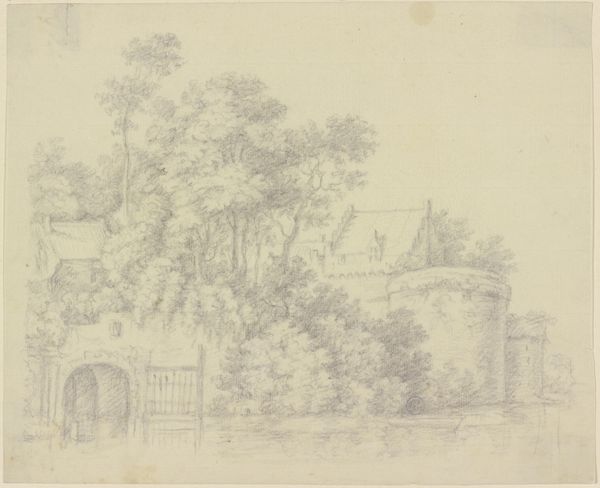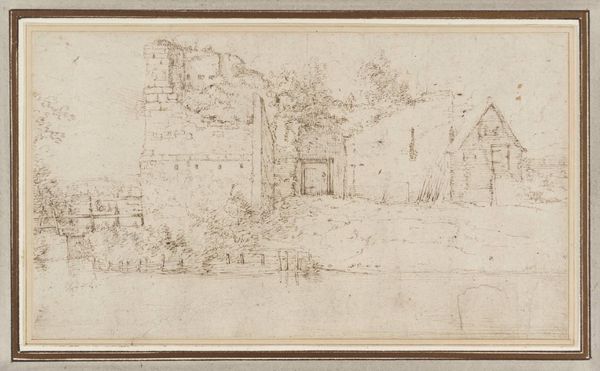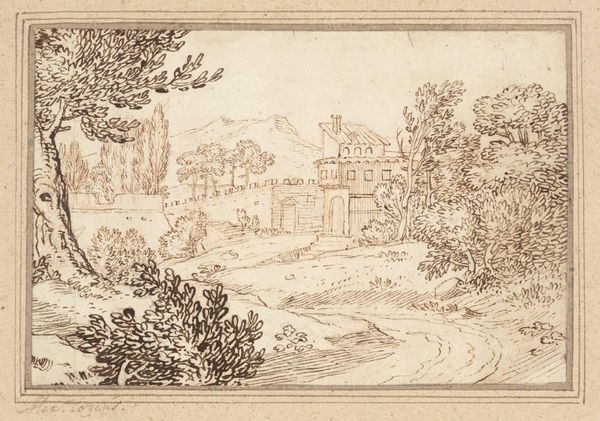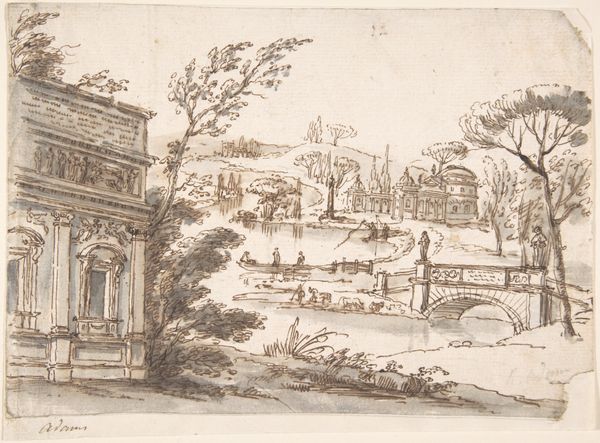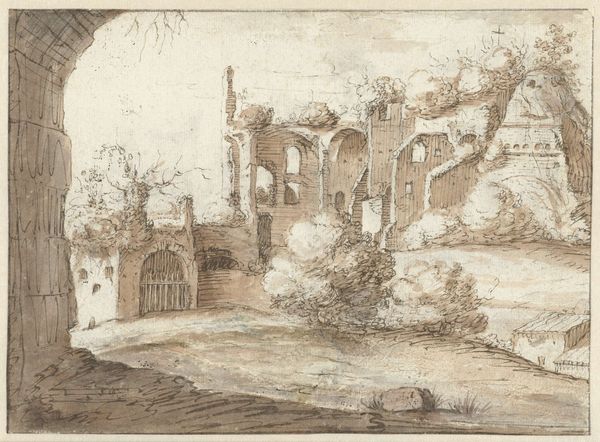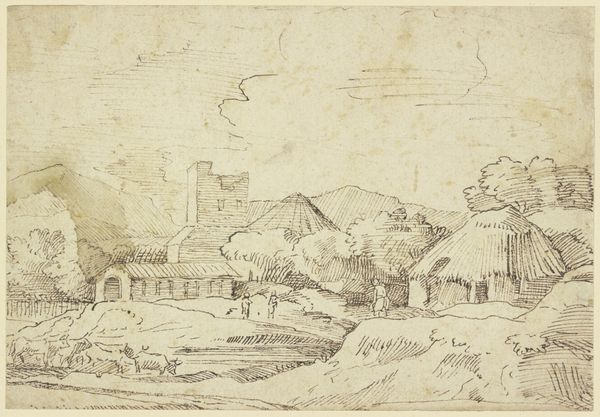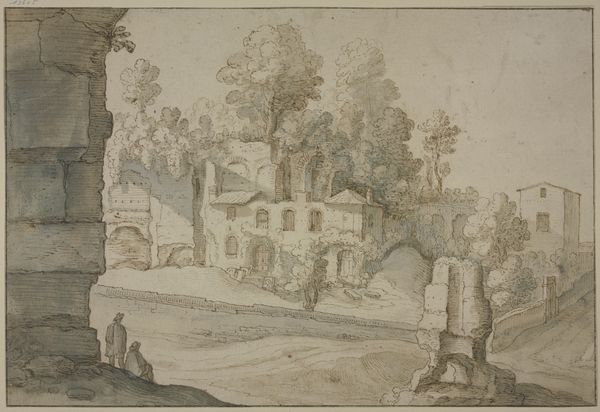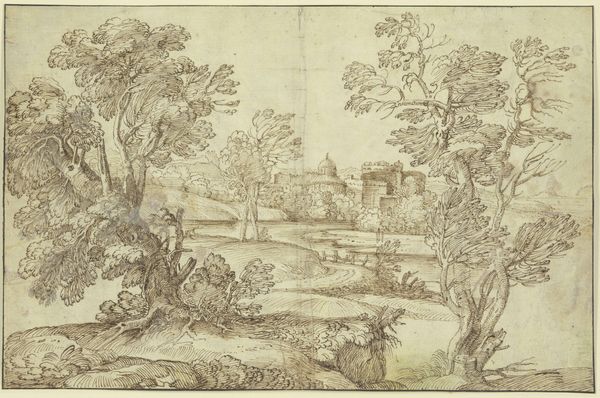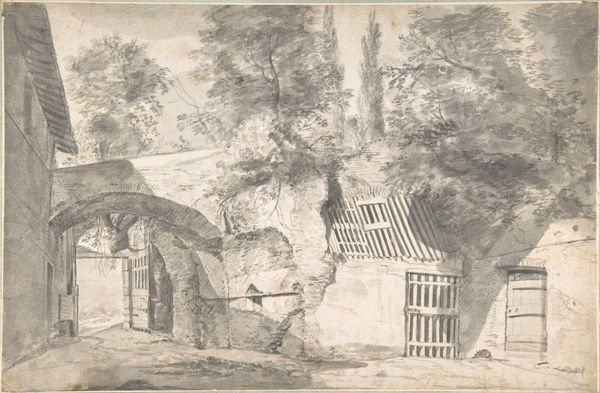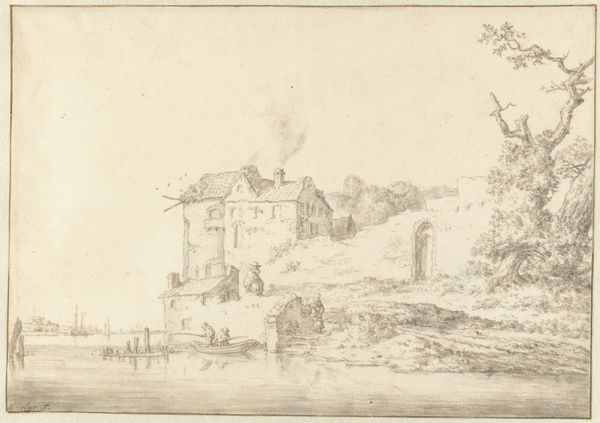
drawing, print, etching, paper, ink, chalk, pen, engraving
#
drawing
#
baroque
# print
#
etching
#
landscape
#
etching
#
paper
#
ink
#
chalk
#
line
#
pen
#
cityscape
#
watercolour illustration
#
engraving
Dimensions: 132 × 260 mm
Copyright: Public Domain
Editor: This is Giovanni Francesco Grimaldi's "View of La Magliana," created around 1670. It's a pen, ink, and chalk drawing on paper, giving it a very linear quality. The architectural elements and landscape blend together in a really interesting way, making me wonder about the role of these grand estates near Rome. What can you tell us about the cultural significance of these landscape drawings? Curator: Grimaldi's drawing presents us with more than just a scenic view. It invites us to consider the socio-political landscape of 17th-century Rome. These country estates, like La Magliana, were symbols of power and status for aristocratic families. How does Grimaldi’s rendering either reinforce or subtly critique this display of power, through composition, choice of perspective, or attention to specific architectural details? Editor: That’s fascinating. I hadn't thought about it as a commentary on power. I was mainly drawn to the picturesque qualities—the way he combines the wildness of nature with the rigid geometry of the architecture. Curator: Precisely. Grimaldi, trained in Bologna and Rome, catered to a specific market. These were collectable images and visual documents of aristocratic properties. What narrative do you think this idealization of the Italian countryside served at a time when Rome was vying for cultural and political dominance? How might this drawing have been displayed or circulated, further shaping its meaning and impact? Editor: So it wasn’t just about documenting the landscape but about creating a certain image and shaping perceptions? That's such a different way of thinking about landscape art. Curator: Absolutely. The power of imagery lies in its ability to construct narratives, and Grimaldi’s "View of La Magliana" participates in a broader conversation about the social and cultural values of his time. Think of the political undertones and artistic intentions. Editor: This really opened my eyes to the layers of meaning embedded within what I initially saw as just a pretty landscape drawing. I'll definitely look at landscape art with a more critical eye from now on. Curator: And I will consider the effect of "pretty landscape drawings" like these within our collection. Thanks for sharing your observations.
Comments
No comments
Be the first to comment and join the conversation on the ultimate creative platform.

